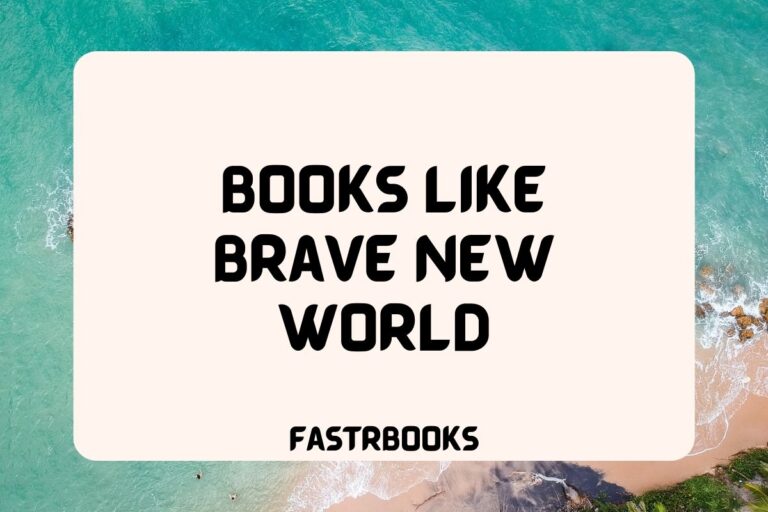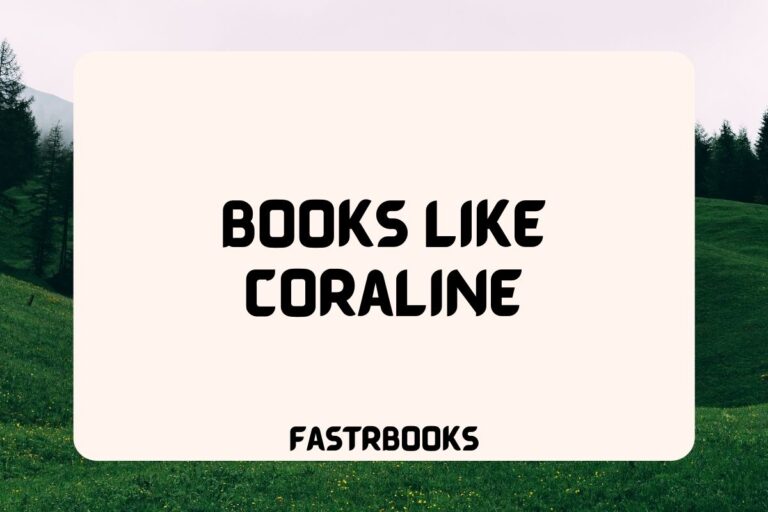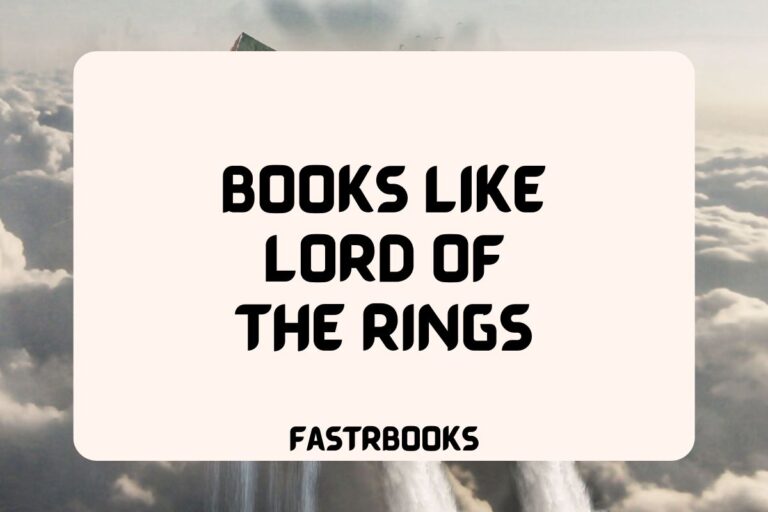34 Best Classic Books For Teens

Classic literature has an enduring appeal that transcends time and age, making it a rich source of exploration for teenagers.
Whether you’re a young reader eager to embark on literary journeys or a parent seeking to introduce your teen to the timeless treasures of the written word, our list of these classic books, aimed at teens, is the perfect starting point.
These novels, written by some of the greatest authors in literary history, offer profound insights into human nature, society, and the complexities of growing up.
From unforgettable coming-of-age stories to epic adventures, these classic books have captivated generations of readers and continue to resonate with today’s teens.
Join us as we delve into the pages of these timeless tales, where characters come alive, and the themes explored are as relevant today as they were when these works were first penned.
Let’s begin.
34 Classic Books For Teens
“To Kill a Mockingbird” by Harper Lee
This novel is set in the 1930s in a small town in Alabama. The story is narrated by Scout Finch, a young girl, whose father, Atticus Finch, is a lawyer tasked with defending Tom Robinson, a Black man falsely accused of raping a white woman.
The novel deals with heavy themes of racial injustice, moral growth, and the loss of innocence. It’s celebrated for its warmth and humor, despite dealing with serious issues.
“The Catcher in the Rye” by J.D. Salinger
The novel follows Holden Caulfield, a teenager from New York City, who is expelled from his prep school and runs away to Manhattan.
It’s a deep dive into teenage angst and rebellion, reflecting the complexities and challenges of coming of age. Holden’s narrative explores themes of alienation, superficiality, and the phoniness he perceives in the adult world.
“1984” by George Orwell
A dystopian novel set in a totalitarian future where society is under the omnipresent surveillance of Big Brother and the Party. The protagonist, Winston Smith, works for the Party but secretly dreams of rebellion.
Orwell’s novel is a profound exploration of the dangers of overreaching government power, manipulation of truth, and the erosion of individual freedom.
“Pride and Prejudice” by Jane Austen
This classic romantic novel revolves around Elizabeth Bennet and Mr. Darcy, whose initial misunderstandings and mutual antipathy evolve into love and respect.
Set in rural England in the early 19th century, it critically examines issues of marriage, morality, and the societal norms and class structures of the time.
“The Great Gatsby” by F. Scott Fitzgerald
Set in the Roaring Twenties, this novel tells the story of the fabulously wealthy Jay Gatsby and his love for the beautiful Daisy Buchanan.
It’s a sharp critique of the American Dream, exploring themes of decadence, idealism, resistance to change, and excess. Fitzgerald paints a vivid picture of the Jazz Age, a time of loosening morals, glittering jazz, and bootleg kings.
“Animal Farm” by George Orwell
This satirical fable reflects events leading up to the Russian Revolution of 1917 and then on into the Stalinist era of the Soviet Union.
Orwell, through the allegory of a farm where the animals overthrow their human owner and take control, explores how power can corrupt and how revolutions can devolve into tyranny.
“Lord of the Flies” by William Golding
After a plane crash strands a group of British boys on a deserted island, their attempts at self-governance gradually devolve into savage and brutal behavior. The novel serves as a potent allegory about the inherent brutality of human nature and the thin veneer of civilization that masks our more primal instincts.
It explores themes of innocence, the loss of it, and the dark side of human nature.
“Jane Eyre” by Charlotte Brontë
This novel is a blend of gothic romance and social criticism. It tells the story of Jane Eyre, an orphan who faces abuse and hardship in her early years. As an adult, she becomes a governess at Thornfield Hall, where she meets and falls in love with the mysterious Mr. Rochester.
The novel is notable for its exploration of Jane’s moral and spiritual development, and its strong critique of the class system, gender inequality, and the plight of women in Victorian society.
“Wuthering Heights” by Emily Brontë
Set on the Yorkshire moors, this novel revolves around the intense and tragic relationship between Catherine Earnshaw and Heathcliff, an orphan brought to live at Wuthering Heights.
The story is a complex web of love, betrayal, and revenge, spanning two generations. The novel is known for its gothic elements, its exploration of destructive love, and its detailed depiction of the moorland setting.
“Brave New World” by Aldous Huxley
This dystopian novel presents a future society where people are genetically engineered and conditioned for their roles in a rigid caste system. Happiness is maintained through pharmaceutical means and an emphasis on consumerism and superficial pleasures.
The novel critiques modernity and the loss of individuality, exploring themes like the use of technology to control society, the sacrifice of freedom for happiness, and the degradation of human values.
“The Adventures of Huckleberry Finn” by Mark Twain
This novel follows the adventures of Huckleberry Finn, a boy who flees his abusive father and embarks on a journey down the Mississippi River with Jim, an escaped slave.
The story is renowned for its vivid depiction of people and places along the Mississippi River. It tackles serious themes such as racism, morality, freedom, and the inherent contradictions of American society.
“Little Women” by Louisa May Alcott
This coming-of-age novel focuses on the lives of the four March sisters—Meg, Jo, Beth, and Amy—during the American Civil War. It explores their passage from childhood to womanhood, their familial bonds, and their struggles with societal expectations.
The novel is notable for its portrayal of domesticity, work, and true love, and it addresses themes of feminism and individuality.
“Moby Dick” by Herman Melville
This epic sea story recounts the obsessive quest of Captain Ahab, who seeks revenge on Moby Dick, a giant white sperm whale that had previously destroyed his ship and severed his leg at the knee.
The novel is rich with symbolism and explores themes such as obsession, revenge, and the struggle against a seemingly indifferent universe.
“Frankenstein” by Mary Shelley
Often considered the first true science fiction novel, it tells the story of Victor Frankenstein, a scientist who creates a sentient creature in an unorthodox scientific experiment.
The novel explores themes of ambition, the pursuit of knowledge, and the human desire to play God, as well as the ethical and moral implications of such actions. It’s also notable for its exploration of the creature’s struggle with identity and belonging.
“Dracula” by Bram Stoker
This gothic horror novel, published in 1897, tells the story of Count Dracula’s attempt to move from Transylvania to England in order to spread the undead curse, and the battle between Dracula and a small group led by Professor Abraham Van Helsing.
The novel touches on themes of sexuality, invasion, and colonialism, and is often interpreted as a reflection on Victorian fears and anxieties.
“Great Expectations” by Charles Dickens
This novel follows the life of an orphan named Pip, chronicling his experiences from childhood to adulthood.
As Pip learns about the wider world and his own place in it, he dreams of becoming a gentleman and winning the heart of the beautiful Estella. The novel explores themes such as wealth and poverty, love and rejection, and the eventual triumph of good over evil.
“The Scarlet Letter” by Nathaniel Hawthorne
Set in 17th-century Puritan Massachusetts, this novel tells the story of Hester Prynne, who conceives a daughter through an affair and struggles to create a new life of repentance and dignity. Throughout the book, Hawthorne explores themes of legalism, sin, and guilt.
“Oliver Twist” by Charles Dickens
This novel presents the adventures of Oliver Twist, an orphan born in a workhouse and sold into apprenticeship with an undertaker. After escaping, Oliver travels to London, where he meets the Artful Dodger, a member of a gang of juvenile pickpockets led by the elderly criminal Fagin. It is a gritty portrayal of the underbelly of 19th-century London, touching on themes of poverty, crime, and the struggle to survive.
“The Picture of Dorian Gray” by Oscar Wilde
This philosophical novel follows Dorian Gray, a young man who wishes that his portrait could age instead of him. His wish is granted, and the portrait serves as a mirror to his soul, reflecting his increasing corruption as he pursues a life of hedonism and vice.
The novel examines themes of aestheticism, moral duplicity, and the relationship between art and life.
“Crime and Punishment” by Fyodor Dostoevsky
Set in St. Petersburg, Russia, this novel focuses on the mental anguish and moral dilemmas of Rodion Raskolnikov, an impoverished ex-student who formulates and executes a plan to kill an unscrupulous pawnbroker.
The narrative delves deep into Raskolnikov’s psyche as he grapples with the consequences of his actions and seeks redemption.
“Les Misérables” by Victor Hugo
An epic historical novel, it covers the lives of several characters, particularly the ex-convict Jean Valjean, over a period of 20 years. Set against the backdrop of political upheaval in France, it is a story of redemption, moral philosophy, and the impact of the past on the present.
The novel touches on themes of justice, morality, and the struggle against adversity.
“A Tale of Two Cities” by Charles Dickens
This historical novel is set against the backdrop of the French Revolution. It contrasts life in London with the tumultuous events in Paris, capturing the turmoil and upheaval of that era.
The story is famous for its opening lines and explores themes of resurrection, transformation, and the impact of societal injustice.
It interweaves personal dramas with historical events, focusing on characters like the dissolute but noble Charles Darnay and the complex, morally ambiguous Sydney Carton.
“War and Peace” by Leo Tolstoy
This epic novel is one of the most significant works in world literature, offering a vast panorama of Russian society during the Napoleonic Wars. It blends a meticulous historical study with deep philosophical discussions and a rich tapestry of interlinked characters.
The narrative explores themes of war, peace, love, and the philosophical underpinnings of human existence, all set against the backdrop of some of history’s most pivotal and dramatic events.
“Anna Karenina” by Leo Tolstoy
Set in imperial Russia, this novel is often hailed as a pinnacle in realist fiction. The story revolves around the tragic figure of Anna Karenina, a married aristocrat and her affair with the affluent Count Vronsky.
The novel delves into a variety of topics, including love, family, politics, and religion, offering a poignant and comprehensive look at Russian society and the human condition.
“Don Quixote” by Miguel de Cervantes
Often regarded as the first modern novel, this story narrates the adventures of Don Quixote, an aging man who becomes obsessed with chivalric ideals and sets out as a knight-errant.
Accompanied by his loyal squire, Sancho Panza, Don Quixote’s adventures hilariously contrast the romanticized notions of chivalry with the harsh realities of 17th-century Spain, offering deep insights into the nature of truth, morality, and the human psyche.
“The Count of Monte Cristo” by Alexandre Dumas
This adventure novel is a tale of unjust imprisonment, mysterious treasure, and ultimate revenge.
The story follows Edmond Dantès, who, after being wrongfully imprisoned, discovers a treasure and transforms himself into the Count of Monte Cristo to seek vengeance against those who wronged him. It’s a thrilling exploration of fate, justice, mercy, and the power of transformation.
“The Grapes of Wrath” by John Steinbeck
Set during the Great Depression, this novel focuses on the Joads, a poor family of tenant farmers driven from their Oklahoma home by drought, economic hardship, and changes in the agricultural industry.
Their journey to California, seeking jobs, land, dignity, and a future, is a harrowing portrait of the harsh realities faced by many Americans during this time.
Steinbeck vividly captures the era’s socio-economic conditions and the human struggle for survival and dignity.
“David Copperfield” by Charles Dickens
This semi-autobiographical novel is a detailed account of the life of David Copperfield, from a troubled childhood through to a successful career as a writer.
The narrative, told in the first person, explores themes like the importance of family, the cruelty of the Victorian legal and educational systems, and the challenges of growing up.
It is renowned for its rich characterizations and its depiction of the trials and tribulations of life in 19th-century England.
“Treasure Island” by Robert Louis Stevenson
This is a quintessential pirate adventure story, first published in 1883. It’s the tale of young Jim Hawkins who finds a map to a hidden treasure and sets sail on the ship Hispaniola.
The book is packed with memorable characters, notably the one-legged pirate Long John Silver.
It’s a story of adventure, treasure hunting, and the battle between good and evil, setting many of the now-common themes and motifs of pirate tales.
“Robinson Crusoe” by Daniel Defoe
Published in 1719, this novel is often considered the first English novel. It tells the story of Robinson Crusoe, who is shipwrecked and cast away on a deserted island.
Crusoe’s story is not just one of survival against the odds, but also a moral and philosophical reflection on civilization and human nature.
His ingenuity in overcoming the challenges of isolation, his encounters with cannibals, and his eventual rescue, make it a compelling adventure narrative.
“Gulliver’s Travels” by Jonathan Swift
This 1726 satirical novel is much more than a simple story of a series of voyages. In it, Lemuel Gulliver travels to various remote nations, encountering the tiny people of Lilliput, the giants of Brobdingnag, the intellectual horses (the Houyhnhnms), and the brutish Yahoos.
Swift uses these fantastical elements as a vehicle for biting satire on human nature, society’s flaws, and the pettiness of political disputes.
“Fahrenheit 451” by Ray Bradbury
Written in 1953, this dystopian novel presents a future American society where books are outlawed and “firemen” burn any that are found.
The story follows Guy Montag, a fireman who becomes disillusioned with his role in a society that suppresses intellectual freedom and encourages mindless consumption.
The novel explores themes of censorship, the role of mass media, and the consequences of a disconnected society.
“Rebecca” by Daphne du Maurier
Published in 1938, this gothic novel begins with the whirlwind romance between the naive young narrator and the wealthy widower Maxim de Winter.
After their marriage, they move to his large country estate, Manderley, where the memory of his first wife, Rebecca, haunts the protagonist.
The novel explores themes of jealousy, the nature of memory, and the past’s impact on the present, all set against the mysterious backdrop of the imposing Manderley.
“The Hobbit” by J.R.R. Tolkien
This 1937 novel is a fantasy adventure story that precedes Tolkien’s “The Lord of the Rings” series.
It follows the journey of Bilbo Baggins, a Hobbit who is thrust into an epic quest to reclaim the Dwarf Kingdom of Erebor from the fearsome dragon Smaug. Guided by the wizard Gandalf and joined by a group of dwarves, Bilbo’s journey takes him from a comfortable, unadventurous life to facing challenges and discovering his own bravery and ingenuity.
The novel is notable for its richly imagined world and the way it sets the stage for Tolkien’s later, more complex works.






